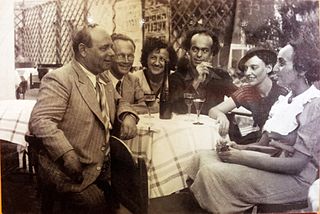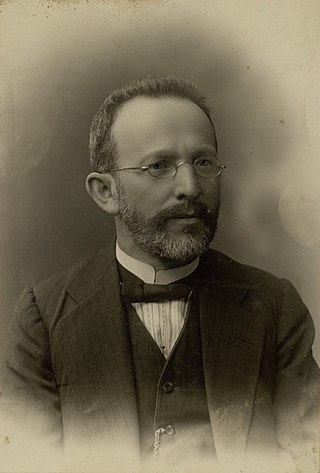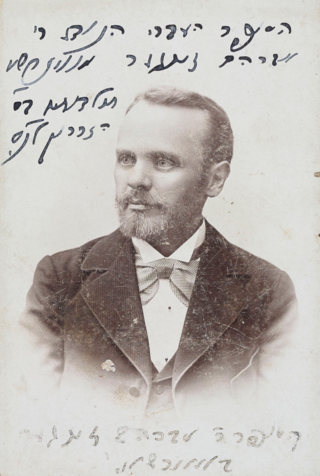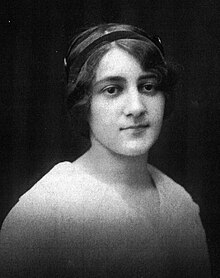
Asher Zvi Hirsch Ginsberg, primarily known by his Hebrew name and pen name Ahad Ha'am, was a Hebrew journalist and essayist, and one of the foremost pre-state Zionist thinkers. He is known as the founder of cultural Zionism. With his vision of a Jewish "spiritual center" in Eretz Israel, his views regarding the purpose of a Jewish state contrasted with those of prominent figures within the Zionist movement such as Theodor Herzl, the founder of political Zionism. Unlike Herzl, Ahad Ha'am strived for "a Jewish state and not merely a state of Jews".

Mendele Mocher Sforim, born Sholem Yankev Abramovich or S. J. Abramowitch, was a Jewish author and one of the founders of modern Yiddish and Hebrew literature. His name was variously transliterated as Moykher, Sfarim,Seforim, etc.

Yosef Haim Brenner was a Hebrew-language author from the Russian Empire, and one of the pioneers of modern Hebrew literature.
Kol Mevasser was a Yiddish-language periodical that appeared from October 11, 1862 into 1872. It is considered by Sol Liptzin and others to be the most important early Yiddish-language periodical.

Yocheved Bat-Miriam was an Israeli poet. Bat-Miriam was Born in Belorussia to a Hasidic family. She studied pedagogy in Kharkov and at the universities of Odessa and Moscow. During this period, she participated in the revolutionary literary activities of the “Hebrew Octoberists”, a Communist literary group, and one of her earliest poem-cycles, a paean to revolutionary Russia entitled Erez (Land) was published in the group's anthology in 1926. She is unusual among Hebrew poets in expressing nostalgia for the landscapes of the country of her birth. Yocheved migrated to British Palestine, later to be called Israel, in 1928. Her first book of poetry, Merahok was published in 1929. In 1948, her son Nahum (Zuzik) Hazaz from the writer Haim Hazaz died in the 1947–1949 Palestine war. Since then she never wrote a poem again.

Chava Alberstein is an Israeli musician, lyricist, composer, and musical arranger. She moved to Israel in 1950 and started her music career in 1964. Alberstein has released over sixty albums in Hebrew, English, and Yiddish. She is known for her liberal activism and advocacy for human rights and Arab-Israeli unity, which has sometimes stirred controversy, such as the ban of her song "Had Gadya" by Israel State Radio in 1989. Alberstein has received numerous accolades, including the Kinor David Prize, the Itzik Manger Prize, and honorary doctorates from several universities.

Yitzchak Yaacov Reines, was a Lithuanian Orthodox rabbi and the founder of the Mizrachi Religious Zionist Movement, one of the earliest movements of Religious Zionism, as well as a correspondent of Theodor Herzl.

Aleksander Ossypovich Zederbaum was a Polish-Russian Jewish journalist who wrote primarily in Hebrew. He was founder and editor of Ha-Melitz, and other periodicals published in Yiddish and Russian.

Ha-Tsfira was a Hebrew-language newspaper published in Poland in 1862 and 1874–1931.

Idov Cohen was a Romanian-Israeli politician and journalist. He served as a member of the Knesset for the Progressive Party and Liberal Party between 1949 and 1963.
Miriam Shapira-Luria, also known as Rabbanit Miriam, was a Talmudic scholar of the Late Middle Ages. According to academic Lawrence H. Fuchs, she was one of the "most noted" women Talmud scholars.

Esther Raab was a Hebrew author of prose and poetry, known as "the first Sabra poet", due to her eminence as the first Israeli woman poet and for the prominence of her native landscape in her imagery.

Devorah Baron was a pioneering Jewish writer, noted for writing in Modern Hebrew and for making a career as a Hebrew author. She has been called the "first Modern Hebrew woman writer". She wrote about 80 short stories, plus a novella titled Exiles. Additionally, she translated stories into Modern Hebrew.
Shulamit Lapid is an Israeli novelist and playwright.
Carole Beth Balin is a Reform rabbi and professor of Jewish history at Hebrew Union College-Jewish Institute of Religion in New York City. Her research interests include Eastern European and American Jewish history, the history of Reform Judaism, and gender studies. She received laudatory reviews for her 2003 book To Reveal Our Hearts: Jewish Women Writers in Tsarist Russia, and has co-edited two other books. She is a co-curator of "Bat Mitzvah Comes of Age", a traveling exhibition sponsored by the Smithsonian-affiliated National Museum of American Jewish History and the Moving Traditions Jewish non-profit.

Samuel Leib Zitron, also known as S. L. Citron, was a Hebrew and Yiddish writer, historian, and literary critic. He contributed to the Yiddish press and to nearly all the Hebrew periodicals in the Diaspora over 50 years.
Agudat Ḥovevei Sfat Ever was a national organization founded in the early 1900s to promote the study of Hebrew and its literature in the Russian Empire. A precursor of the Tarbut movement, more than sixty chapters of Agudat Ḥovevei Sfat Ever were established across Russia, and the society operated a network of Hebrew-language kindergartens and teachers' schools. It was forcibly disbanded by the Communist regime in 1917.

Abraham Zinger was a Russian-Jewish author, feuilletonist, and translator.
Hannah Bluma Sultz was a Lithuanian Hebrew poet. She was among the few women to publish literary works during the Haskalah period.
Ha-Shiloaḥ was a Hebrew-language literary journal, founded by Ahad Ha'am and the Ahi'asaf Publishing House in 1896. He edited the journal until December 1902, whereupon it came under the editorship of historian Joseph Klausner. It ceased publication in 1926. The journal's title refers to the text of Isaiah 8:6. Initial financing for Ha-Shiloaḥ was provided by businessman Kalonymus Ze’ev Wissotzky under the condition that Ahad Ha'am would be editor.
















